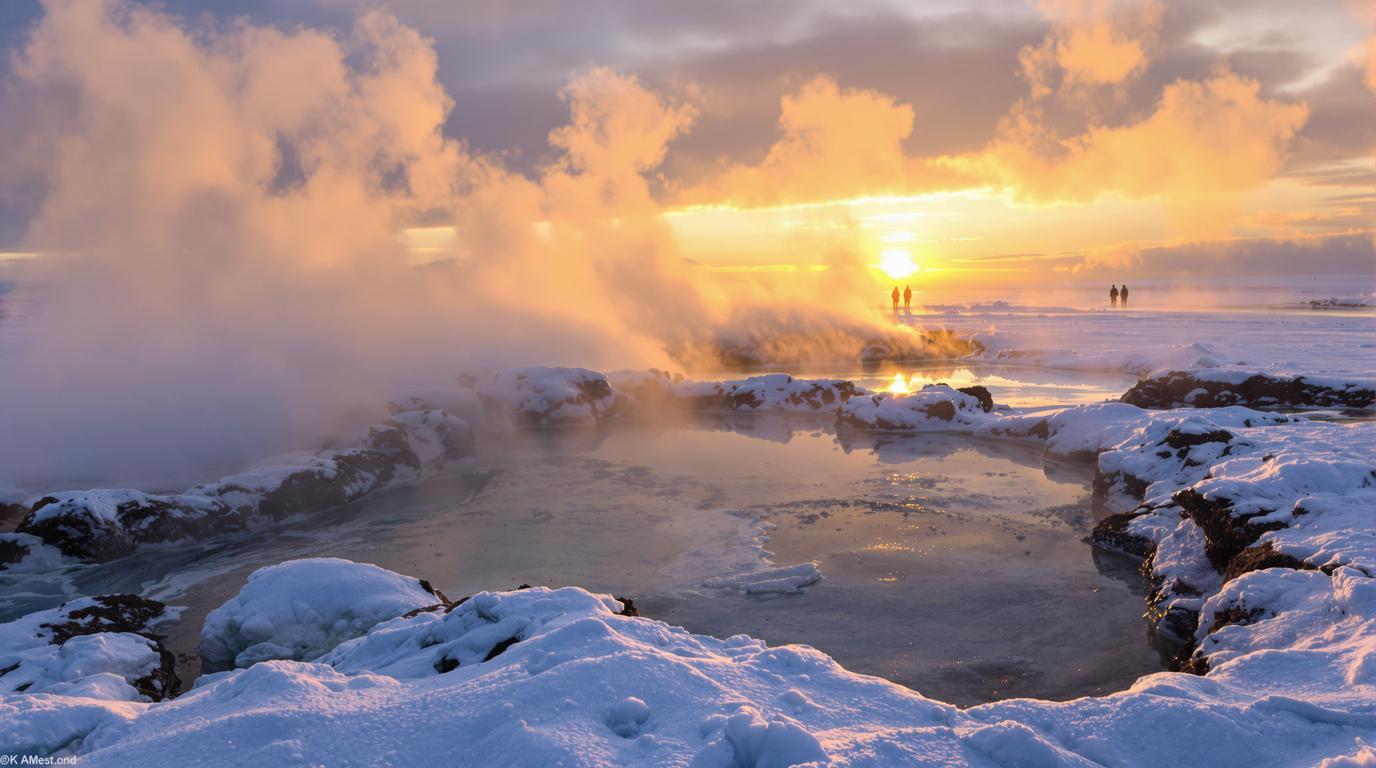Beringia: The Lost World Between Continents That Shaped Human History
A vanished land bridge where mammoths once roamed
During the last Ice Age, a vast grassland the size of Australia connected Asia and North America where the frigid Bering Sea now churns. This vanished territory, known as Beringia, served as Earth’s final superhighway for ancient peoples migrating into the Americas. Today, only fragments remain above water, preserving one of our planet’s most remarkable lost landscapes.
“Beringia represents the most significant migration corridor in human history,” explains Dr. Ted Goebel, archaeologist at Texas A&M University. “Without this land bridge, the peopling of the Americas would have unfolded completely differently – or perhaps not at all.”
The ultimate wilderness experience for adventure travelers
While most of Beringia lies submerged beneath the Bering Sea, its surviving remnants offer intrepid travelers a glimpse into Earth’s distant past. The Bering Land Bridge National Preserve in Alaska protects 2.7 million acres of tundra, ancient lava flows, and remarkable hot springs that once served as crucial survival oases for Ice Age travelers.
Few destinations match Beringia’s profound solitude. Travelers seeking similarly remote experiences might consider Wyoming’s snow-buried mountain towns, though even these have more infrastructure than Beringia’s pristine wilderness.
Maar lakes: Earth’s deepest explosion craters
Among Beringia’s most spectacular features are its maar lakes – massive water-filled craters formed by volcanic explosions. The preserve contains the world’s four largest examples, including Devil Mountain Lakes, a 6-mile crater system filled with crystalline water.
These geological wonders, formed when magma contacted groundwater and triggered steam explosions, create otherworldly landscapes perfect for photography. Their remote location ensures you’ll likely have these natural masterpieces entirely to yourself.
Where Indigenous cultures preserve ancient connections
For Alaska Native peoples, Beringia isn’t just geography – it’s ancestry. Communities including the Iñupiat continue traditions stretching back thousands of years, maintaining cultural practices that helped their ancestors survive in this challenging environment.
“Our stories say we’ve always been here, since time began,” shares Clara Pushcart, an Iñupiat elder from Nome. “The land bridge is just confirmation of what our elders have always taught – that we are connected to peoples across the water.”
Preparing for Earth’s most remote adventure
Visiting Beringia requires exceptional preparation. The preserve headquarters in Nome, Alaska serves as your starting point. With no roads, facilities, or trails within the preserve itself, visitors must arrange bush planes or boats and bring all supplies. Those seeking more accessible remote destinations might consider South Africa’s UNESCO cabins or secluded Caribbean bays.
Hot springs in the Arctic: Beringia’s geological anomaly
Perhaps the most surprising feature in this Arctic landscape is Serpentine Hot Springs (Iyat in Iñupiat). These geothermal pools maintain temperatures around 140°F year-round, creating a startling contrast against winter’s snow-covered tundra. During the Ice Age, these springs provided crucial warm microclimates where plants, animals, and humans could survive.
Unlike Arizona’s mining landscapes, Beringia’s geology tells a story of preservation rather than extraction – though both showcase Earth’s remarkable geological processes.
Walking where mammoths once thundered
Perhaps most compelling is the chance to follow in the footsteps of Ice Age giants. The preserved tundra once supported vast herds of woolly mammoths, steppe bison, and short-faced bears. Fossilized remains occasionally emerge from thawing permafrost, offering visitors glimpses of this lost ecosystem.
While places like Malaysia’s heritage sites preserve human history through art, Beringia preserves something far older – the very landscape that made human history possible.
To stand in Beringia is to experience the Earth as our earliest ancestors knew it – vast, challenging, and untamed. It’s a journey not just across geography, but through time itself, connecting us to the ancient migration that populated two continents and forever changed human destiny.
